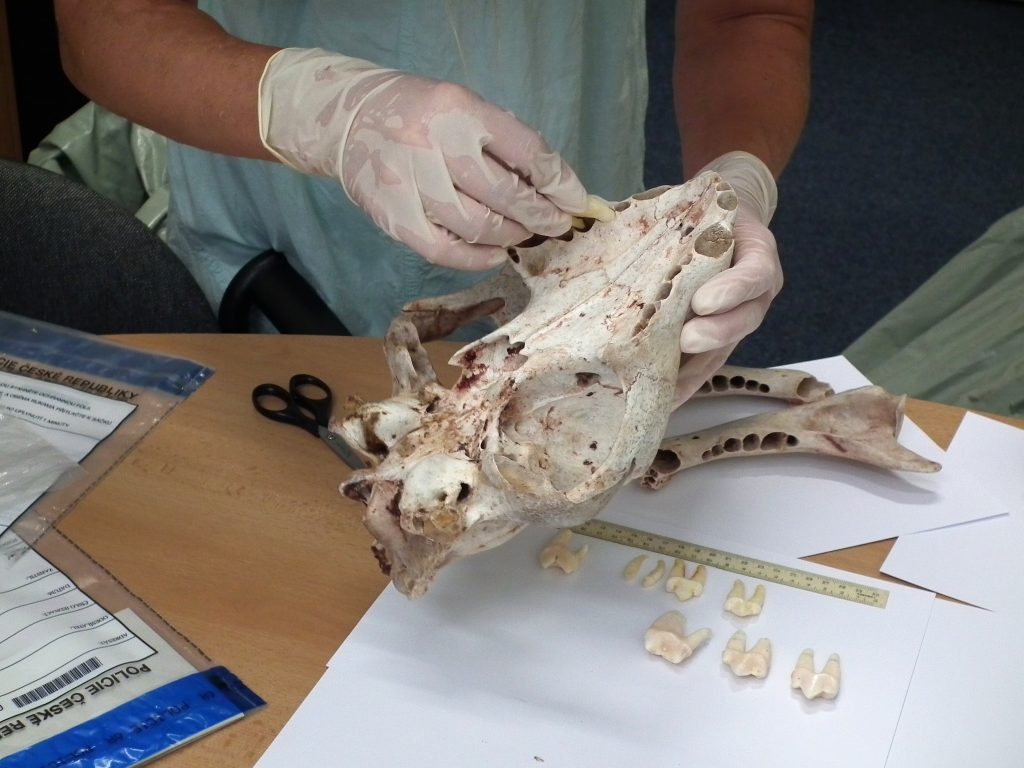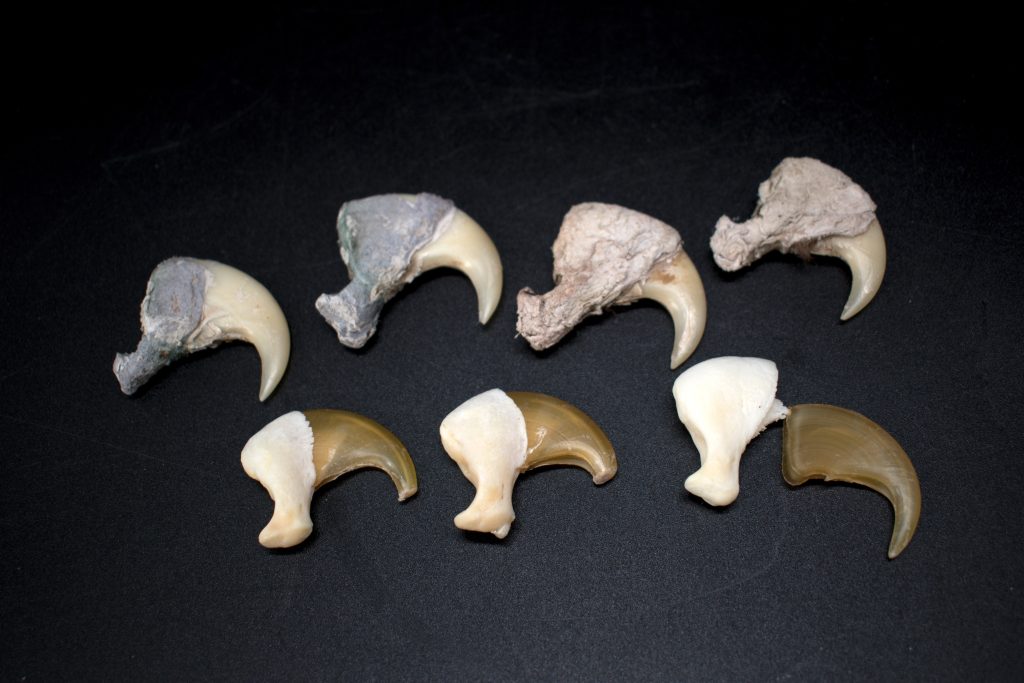mammalian osteological determination, epidermal derivatives

Morphological assessment is often the first stage in the examination of seized evidence. Laboratory analyses are usually more economically demanding and are therefore only used in cases where morphology does not allow conclusions to be drawn or specific questions (geographical origin, age, relationship, etc.) need to be answered.
Determination in applied practice differs from academic practice, often being tied to specific knowledge that is not published. Most of the illegal trade does not involve whole animals, but body parts, fragments or products that lack the characteristics described in the literature.

Bones, teeth, claws, horns are traded, and body parts are used as decorative items, jewelry, souvenirs, hunting trophies, talismans, bushmeat, and ingredients for Asian medicine or magic. For investigative purposes, it is important to identify the species of animal and to find out as much detail as possible about the individual (its origin, age, sex, cause of death, etc.).

In the ForWild project, research team deals with osteological material and epidermal derivatives of mammals (skulls, bones, teeth, claws, horns). Key species that are most often subject to illegal trade in these products were selected by analysing data from CITES databases. These include larger carnivores, monkeys, cetaceans and some ungulate species.
The team is gradually gathering available evidence for determination (including grey literature), measuring and documenting material from museums and zoos, and examining species-specific traits of a primarily qualitative nature (overall habitus, shape, size, curvature and proportions of parts, specific characters, dental characteristics, etc.). The deterministic traits found suitable for use in control practice will be compiled into an atlas for use by the control and investigating units.
Contact person: Mgr. Pavla Říhová, pavla.rihova@natur.cuni.cz